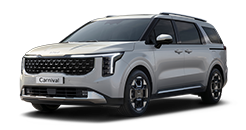open menu
- Home>
- Discover Kia>
- ASK>
- What is a limited-slip differential?
What is a limited-slip differential?
“A limited-slip differential is a device that calculates and redistributes power by shifting a different amount of torque among the wheels to avert the loss of traction.”
In normal driving, the rotational speed of the left and right wheels remains the same, but when driving on snowy, icy, sandy, or muddy roads, a difference in the number of rotations between the wheels on each side arises. The same also occurs when turning corners. The outer wheel rotates more because its turning distance is longer than that of the inner wheel. Therefore, differentials are needed to transfer a different amount of power to the wheels. Limited-slip differentials serve to prevent traction loss and obtain the optimal distribution of power by adjusting the torque among wheels. They allow the wheel with traction to get more torque so that the car keeps on moving.
Limited-slip differentials combine characteristics of an open differential that allows each wheel to spin independently, and a locked differential that makes the rotational speed of each wheel the same. If more grip for a certain wheel is considered necessary, the device adds pressure to the wheel with less grip, and the wheels become locked together, making them unable to spin at overly different rates. This enables the wheel with more traction to put torque down. When turning a corner, the grip of the inner wheel weakens, and the wheel can slip. In this case, the device shifts the torque to the inner wheels to prevent slippage and redistributes the torque to the outer wheels.






